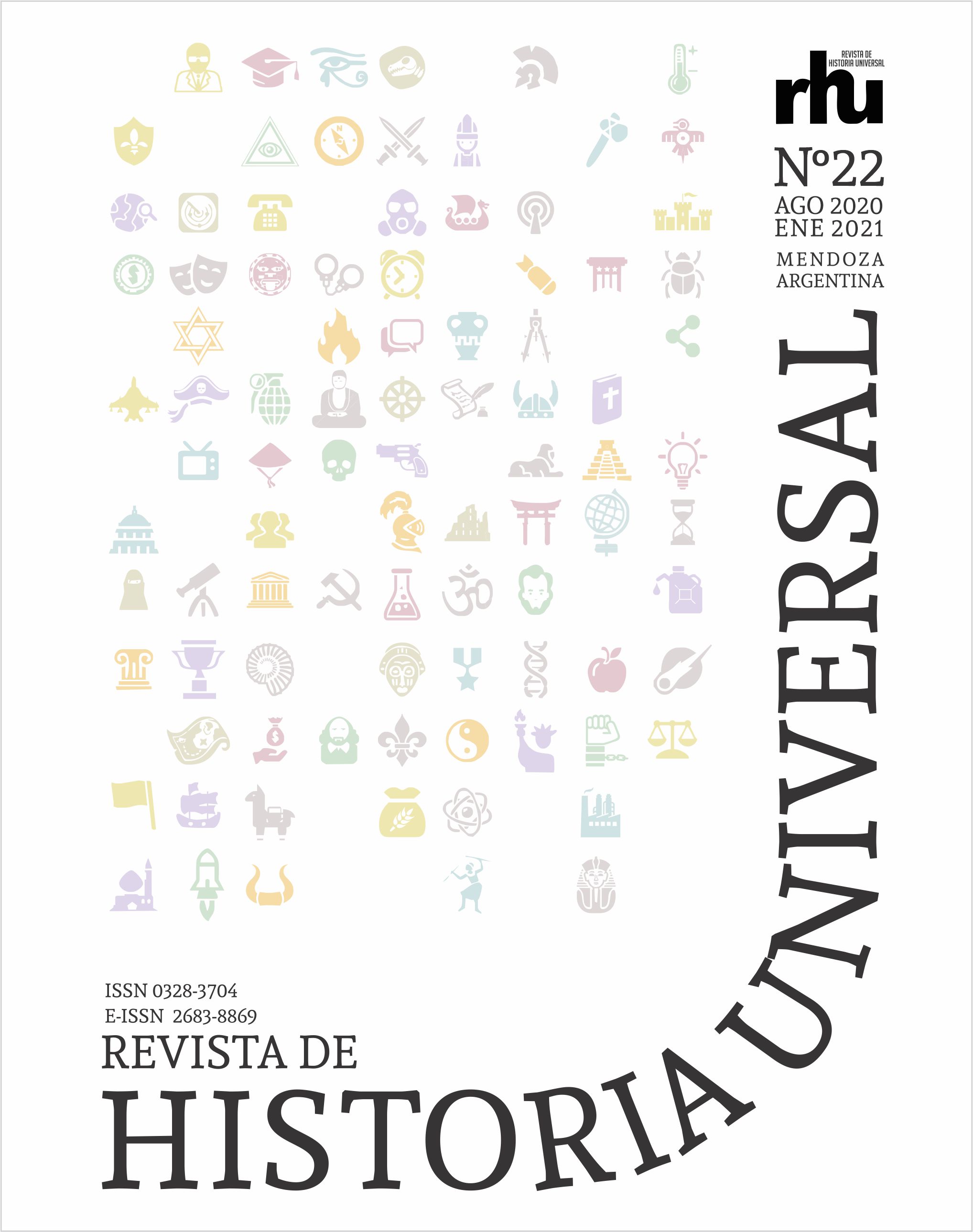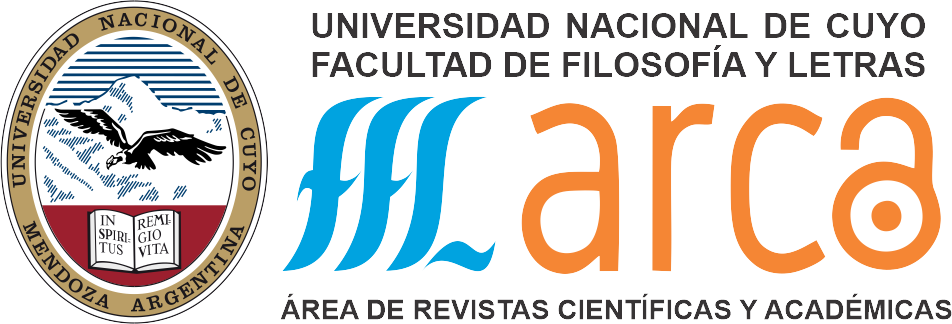Romulus and Remus: from Horace to Saint Augustine and to Saint Leo the Great
Keywords:
Romulus and Remus, Primigeniam Guilt, Expiation, Saint Agustin, Saint Leo the GreatAbstract
In Horacio's poetry, the idea of an initial offense against divinity in the foundation of Rome arises with the death of Remo by his brother. For Horacio and Virgil the expiator is Octavio Augusto, a descendant of Venus, who with his political work will pacify the Roman orb and pay the foundational guilt.
This approach was retaken in later reflections by several authors and by some SSPP such as saint Agustín and saint Leo the Great. The Hiponense deconstructs the initial myths of the history of Rome rationalizing their incongruities and errors before the accusation to the Christians of having banished the pagan gods and their cult.
Saint Leo the Great founding twins and a local redemption and expiation of St. Peter and St. Paul, added to that of the One Redeemer, for having died martyrs in the caput mundi.
References
Azcárate, Andrés. (1945). La flor de la liturgia. Buenos Aires: Monasterio de San Benito.
Baumer, dom Suitbert (1895). Histoire du Bréviaire. Paris: Letonzey et Ané, 1905, 2 vol., traduit de la éd. allemande.
Beneyto, Juan (1950). Historia de las doctrinas políticas. Madrid: Aguilar, cap. IX San Agustín o las dos ciudades, 76-82.
Buisel, María Delia (1998). El planteo horaciano de la historia de Roman, Auster nº 3, UNLP, CEL, 19-48.
Casquillo Fumanal, Ángel Luis. (2008). Muerte, despedazamiento y apoteosis de Rómulo: un estudio sobre la realidad histórica del primer rey de
Roma", UNED, Espacio, Tiempo y Forma, Serie II, Historia Antigua, t. 21, 2008, 123-184.
Cremona, Vincenzo (1982). La poesia civile di Orazio, Milano: Vita e Pensiero.
de Maeztu, Ramiro (1948). Ensayos. B. Aires: Emecé.
di Capua, F. (4-11-1951). San Leone letterato e artista. L´Osservatore romano, 3-4.
Dumont, Jean (1984). L’Église au risque de l’histoire. Limoges: Criterion.
Garrido Bonaño, Manuel (1969). San León Magno. Homilías sobre el año litúrgico. Madrid: B.A.C.
Guarducci, Margherita (1982). La cattedra de San Pietro nella Scienza e la Fede. Roma: Imprenta Nazionale.
Guéranger, dom Prosper (1889). L’Année liturgique. Le temps après la Pentecôte. Paris: H. Oudin, t. III.
Halliwel, W. (1939). The style of Pope St. Leo the Great. Patristic Studies 59, Washington.
Le Bréviaire romain. (1980). Tours: Les amis du Bréviaire romain.
Leclerq, Jacques & Dolle, R. (1973). Léon le Grand. Sermons. Sources chrétiennes nº 200, Paris: Les Éditions du Cerf, t. IV.
Levoratti, Armando (2000). El tiempo de Dios. B.A.: Bonum.
Marrou, Henri Irénée (1978). Saint Augustin et l’augustinisme. Paris: Éd. du Seuil.
Marrou, Henri Irénée (1978). Teologia de la historia. Madrid: Rialp.
Martí Ballester, Jesús. Conociendo a san León Magno. Fuente: www.jmarti.ciberia.es. Catholic.net. Entrada del 20 de febrero de 2017.
Migne, Jacques Paul (1881). Patrologia latina: Epistula Caroli Magni ad lectores Homiliarii, t. XCV, col. 1160.
Migne, J.P. (1881). Patrologia Latina. S. Leo Magnus, t. LIV, Paris: Garnier.
Migne, Jacques Paul (1881). Patrologia Latina, t. LI, Prosper d’ Aquitaine. De vocatione omnium gentium
Prudencio. (1946). Himnos, Madrid: Emerita y (1950), Madrid: BAC.
Sáenz, Alfredo (1984). San León Magno y los misterios de Cristo. Paraná: ed. Mikael.
San Agustín (1977). La ciudad de Dios, Madrid: B.A.C., ed. bilingüe, 2 vol.
Santo Tomás. Summa Theologica, I, q. LVIII, a. 6.
Schilling, Robert. (1960). Romulus l’élu et Rémus le reprouvé, R.E.L. 38, 182-199.
Schroeder, Alfredo (2007). Minucio Félix, Octavio. Texto bilingüe; traducción, notas y comentario. Buenos Aires: Facultad de Filosofía y Letras (Textos & Estudios, 6).
Schuster, Alfredo Ildefonso. O.S.B. (1931). Liber sacramentorum. Notes historiques et liturgiques sur le Missal Romain. Bruxelles: Vremant et Cie, t. VII.
Setaioli, Aldo (1981), Gli Epodi di Orazio nella critica dal 1937 al 1972 (con un’ appendice fino al 1978), en A.N.R.W., Band II, 31, 3, 1674-1788, Berlin: Walter de Gruyter.
Thraede, Karl & Bickermann, Elias (1973). Le culte des souverains dans l’empire romain. Genève: Foundation Hardt, Entretiens nº 36.
Ver Eecke, Marie. (2006). De l'Aventin au Palatin: le nouvel ancrage topographique de Rémus au moment du passage de la République à l'Empire, Dialogues d'histoire ancienne 32/2, 75-94.
Wavengoort, Hendrik. (1956). The crime of fratricide, Studies in Roman Literature, Culture and Religion, Leiden: E.J. Brill, 169-183.
Williams, Gordon (1970). The nature of Roman Poetry. Oxford: Oxford University Press.









